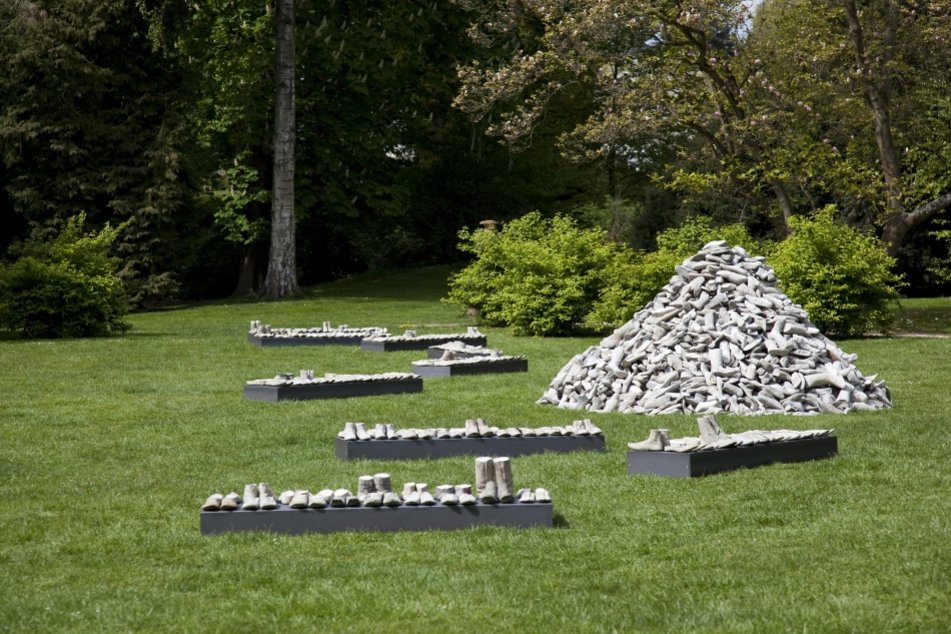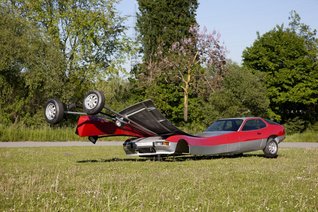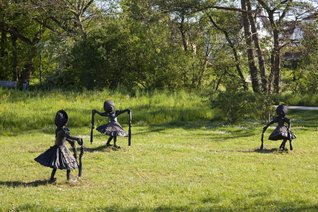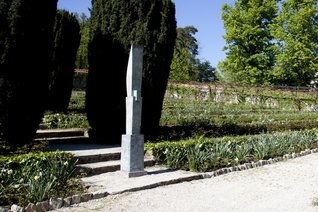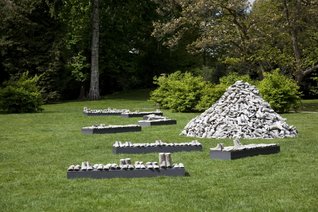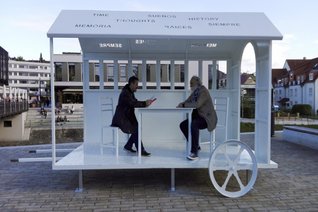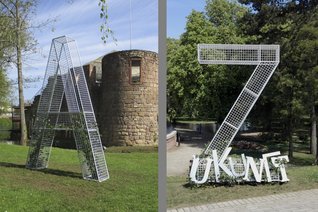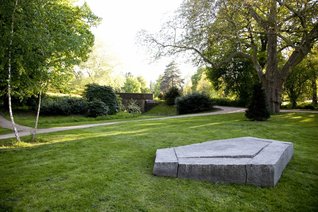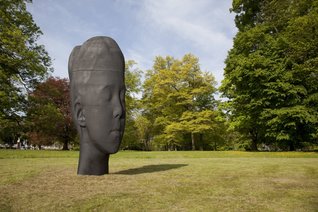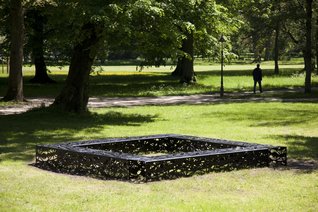Jean Y. Klein
(Canada) *1960 in Montréal
The painter and sculptor Jean Y. Klein, who is also exhibiting in the Hessenpark Open-Air Museum, created his characteristic life-size bronze figure “Hirtin” (Sheperdess) for “Blickachsen 11” in Bad Homburg. Klein primarily concentrates on female figures of Greek mythology. The figure of the shepherdess is connected to the myth of Arcadia as an idyllic place, in which a pastoral people live carefree and happy in harmony with nature. Klein’s “Shepherdess” is protectively holding a lamb in her arms, underlining the deep bond between man and animal. The bucolic notion of the shepherd as a figure on the margins, living in freedom independently of the rural order, is formally integrated into Klein’s representation of his “Shepherdess”: it does not follow the strict rules of human anatomy, rather its free-form, gestic surface design testifies to an undogmatic approach, both to the ideals of beauty and to the production processes of the ancient Greek tradition. Thus Klein’s sculptures are in no way straightforward portrayals of known figures; on the contrary, they are designed as screens onto which the viewer’s imagination is projected.
In the Hessenpark Open-Air Museum three further large-format bronzes created for “Blickachsen 11” by Jean Y. Klein are on display. Like his “Shepherdess”, exhibited in Bad Homburg, the title of “Pastoral” refers to a long tradition of representations of idyllic pastoral motifs. The subject of the owl, also, connects the sculpture with Greek mythology: the owl represents the wise Goddess Athena, who among other things was considered the divine protectress of the artisan. In the Hessenpark, where historical craftsmanship plays an important role, this bronze therefore takes on a meaning of its own. In his designs for the nymph “Calypso” and the winged horse “Pegasus”, Klein, who today lives and works in Berlin and on the Greek Peloponnese, again invokes the world of Greek myths, and concerns himself with human and animal forms. At the same time, these works are not purely realistic or naturalistic. Rather, with his abstracted figures and their roughly hewn surfaces, Klein develops a characteristic formal language oscillating between suggestion and clear definition, transferring, in the process, these ancient motifs into the present.
